The Mugello circuit in Italy is renowned for two wheeled action, with MotoGP fans flocking to the race track each June to cheer on their favourite stars, including Valentino Rossi and the Ducati team.
This year, COVID-19 has meant that MotoGP has had to postpone its visit to the legendary circuit, the first time Mugello has not been on the MotoGP calendar since 1993.
The unusual circumstances have resulted in Formula 1 making its inaugural trip to Tuscany, with the circuit set to be one of the most physically demanding on the calendar for its 20 drivers.
As readers of this site will be all too aware, any new circuit represents a new challenge for those working on the broadcasting front, and Mugello is no different.
Formula 1’s production team comes to Tuscany from Monza with their own intentions and goals, meaning that the result from a television perspective will be significantly different to MotoGP’s own output from their yearly Mugello visit.
But just how different were Formula 1’s camera angles compared to MotoGP’s usual positions for two-wheeled action? Motorsport Broadcasting analyses the running themes from today’s F1 practice sessions…
Higher or lower?
Both championships’ take a significantly different approach in terms of camera height. When analysing last year’s MotoGP race with today’s practice action, it is clear that throughout the 5.2km circuit, F1 have opted to position their cameras lower than MotoGP’s historical positioning.
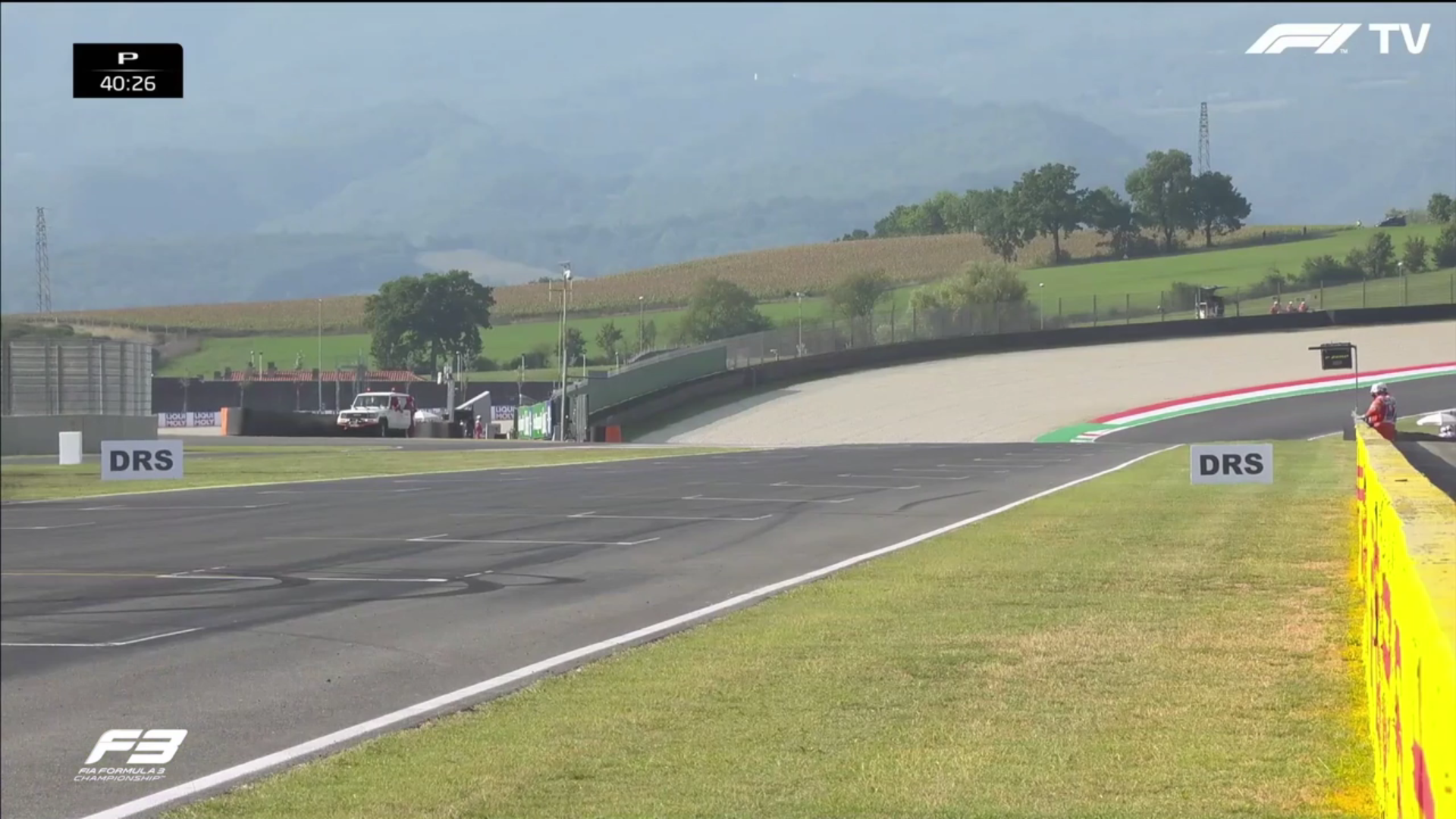
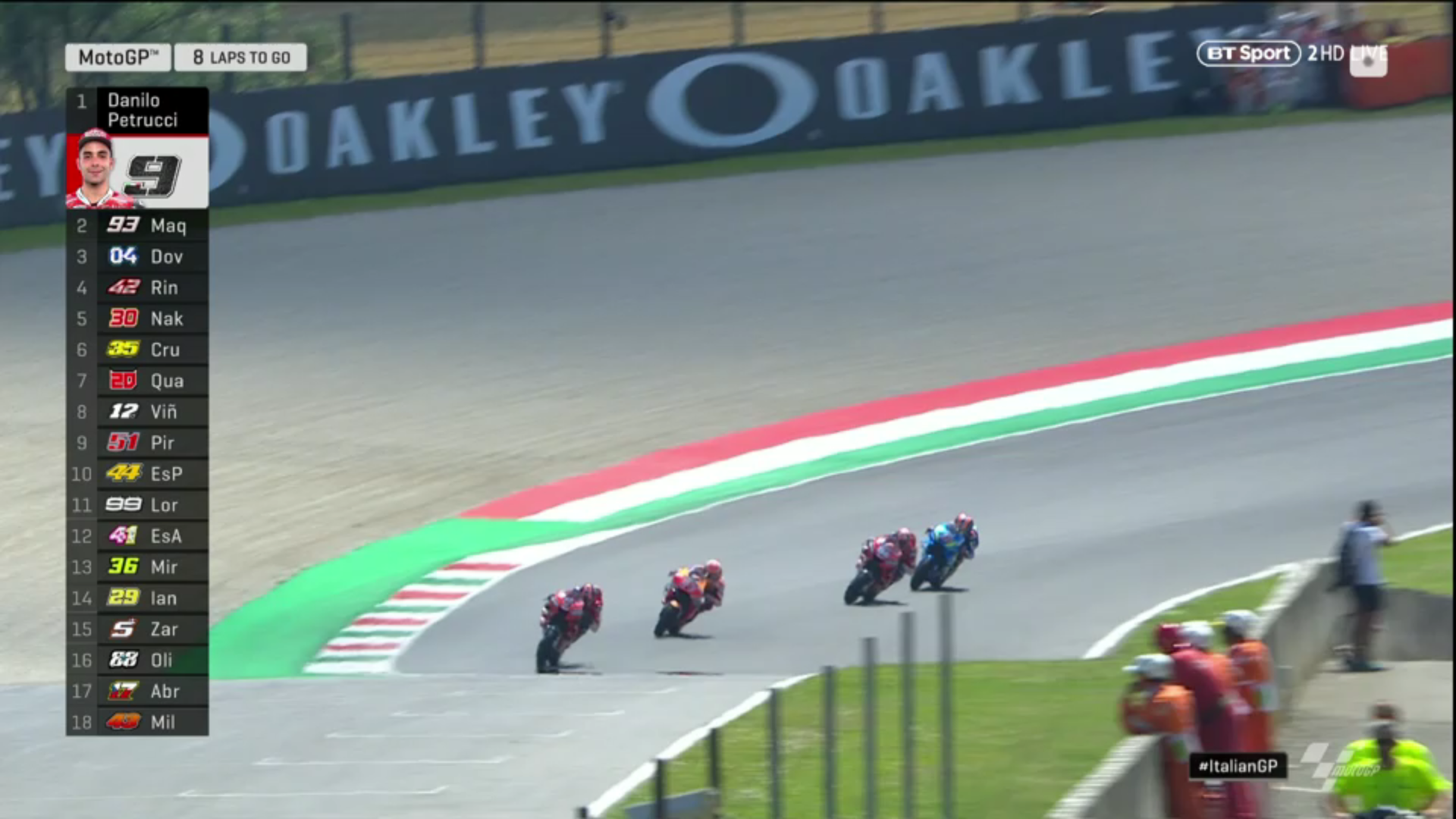
The lower angles help show the direction change of the single-seaters much better than a higher angle – a strategic direction F1, under Liberty Media’s watch, started to take back in 2017. Critically, the lower angles give viewers a better side-on view of the car, which is important for sponsors whose brands are located there.
In contrast, MotoGP’s angles give fans a better idea of the elevation on offer around the Mugello circuit which, in my opinion, F1 does not convey as well as their bike rival.
This is obvious in two main places. MotoGP’s camera angles at the start of the start-finish straight and turn six are higher than F1’s, the bike series making Mugello look like a rollercoaster ride compared to F1. However, F1’s angles show off Mugello’s picturesque backdrop.
The angle at turn six though is deliberate from F1’s perspective. All of the cars will be going flat out heading into here during qualifying, and F1 wants to show the change of direction on offer at high speeds.
Further round the lap, both display the same traits at turns eight and ten: F1 going for the low angle, with MotoGP venturing higher up.
Slip-streaming is a common feature of MotoGP, Moto2 and Moto3, and the higher angles will make it easier to identify when slip-streaming is occurring as the race progresses.
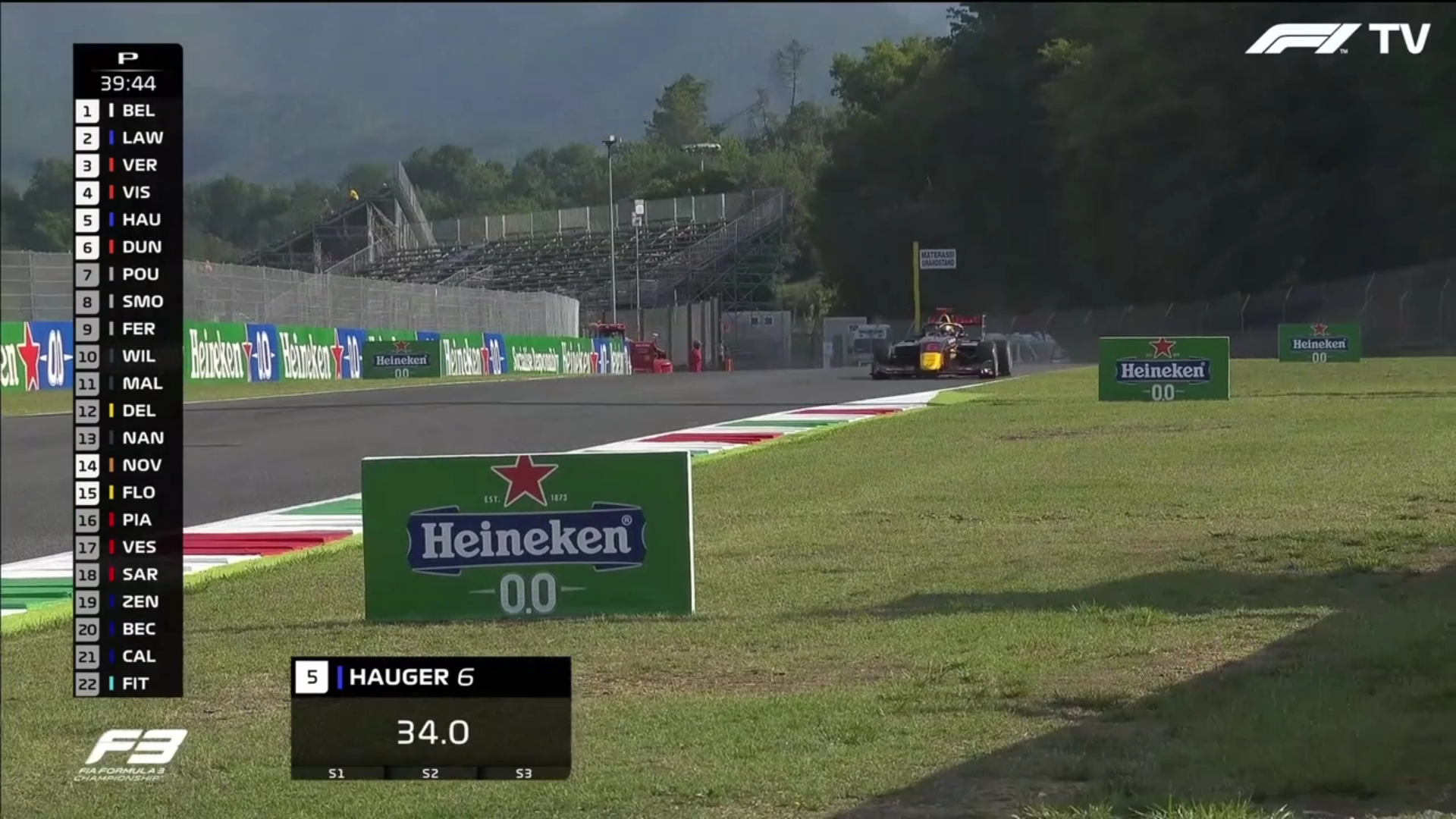
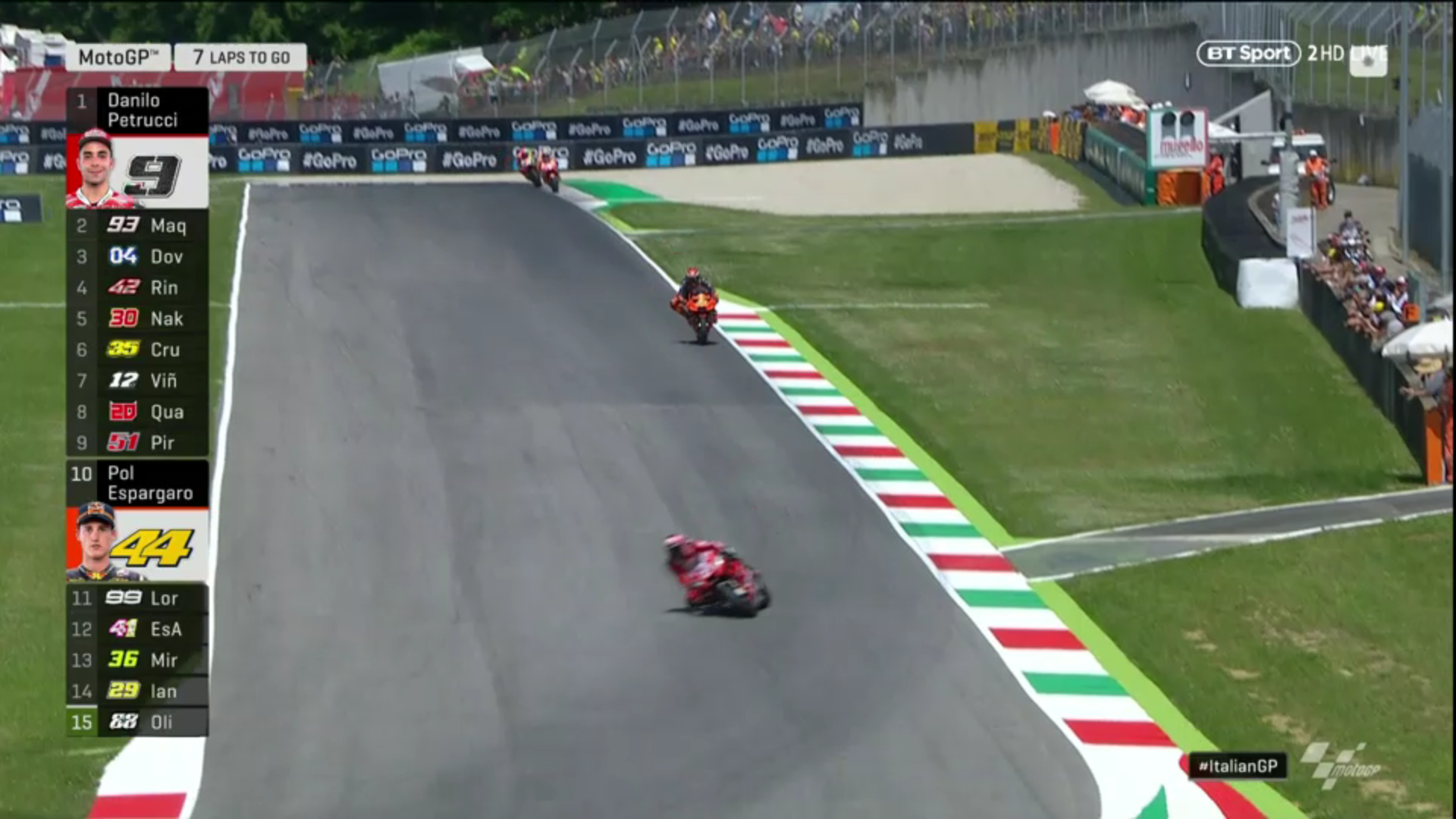
One straight, many cameras
Motor sport is renowned for long straights that head into sharp corners, and Mugello is no different in this regard.
Combined with the elevation change, one camera angle is insufficient to track the machinery from the exit of the final corner to the start of turn one.
At some circuits, such as Shanghai, one camera angle would be enough if you were short on resources, but such an approach would also make for boring viewing.
As Sergi Sendra, Dorna’s Senior Director for Media Content, Television and Production explained to me last year, the TV team typically splits long straights into three: one for the exit from the previous bend, the second for the mid-section as the bikes head to top speed, and finally for the braking zone.
Both MotoGP’s and F1’s positioning in Mugello follows this rule to the letter, with the second angle close to pit lane exit after the starting grid.
Positioning of angles
A common trait from MotoGP is to position additional angles on the inside of corners, and use that as their main angle. During last year’s MotoGP race, the production team utilised an angle on the inside of turn one, using this to show the bike’s lean angle throughout the constant radius hairpin.

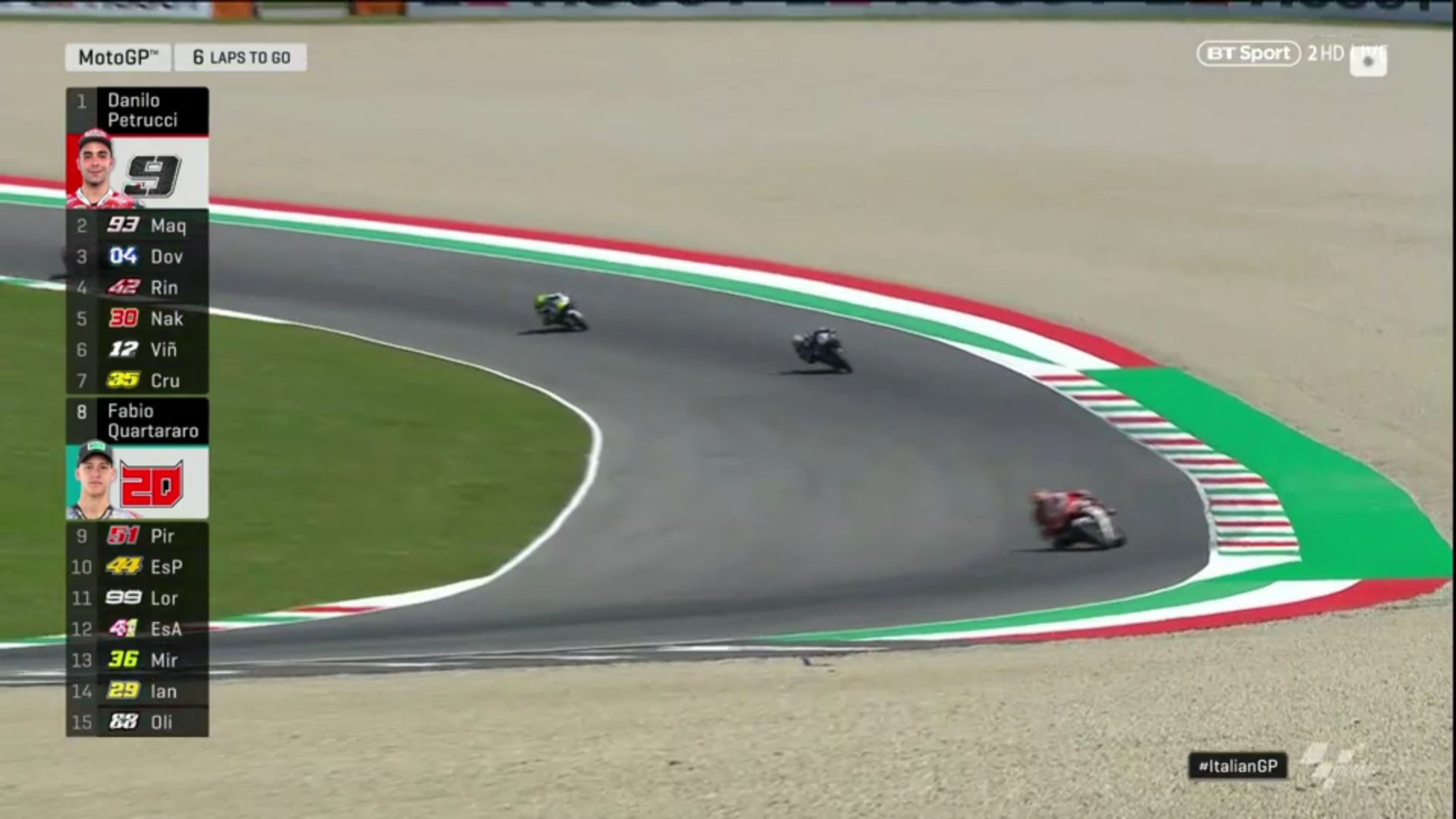
For turn four, MotoGP positions their camera on the entry to the corner showing the riders turn into the bend, whereas F1 opted to go for a more direct angle with their positioning.
In my view, MotoGP does a better job in making Arrabbiata one continuous corner, whereas it is not immediately obvious with F1’s angles that the two corners seamlessly link with one another.
The key to all this though is that there is no right or wrong answer to positioning cameras around a race track.
F1 switching its angles to the same position to MotoGP’s angles would not make F1’s product infinitely better, or vice versa.
The answer is much more nuanced than that depending on the constraints that both championships, commercial, budgetary, or otherwise, are working within.
In addition, the action points for bike racing and single-seater racing are inherently different on a circuit-by-circuit basis, meaning you cannot apply a one size fits all model from a production perspective.
For now, F1 will have learnt a massive amount from today, and will no doubt be making tweaks to their camera angles as the weekend progresses in Mugello as race day approaches.


Contribute to the running costs of Motorsport Broadcasting by donating via PayPal
I’ve been finding F1’s lower camera angles infuriating and genuinely unpleasant to watch since they were introduced a couple of seasons ago. I think they billed it as an attempt to better show the speed to the viewer at home, but I find their constant use of close-ups disorientating as it’s at the expense of the wider view and context of where the car is on the track and the lines the driver is taking.
However, as is mentioned in your piece, are the close-ups really just an attempt to highlight the sponsors decals?!
Also, the ground-level view for the start means it can be difficult to see who is gaining/losing positions off the line.